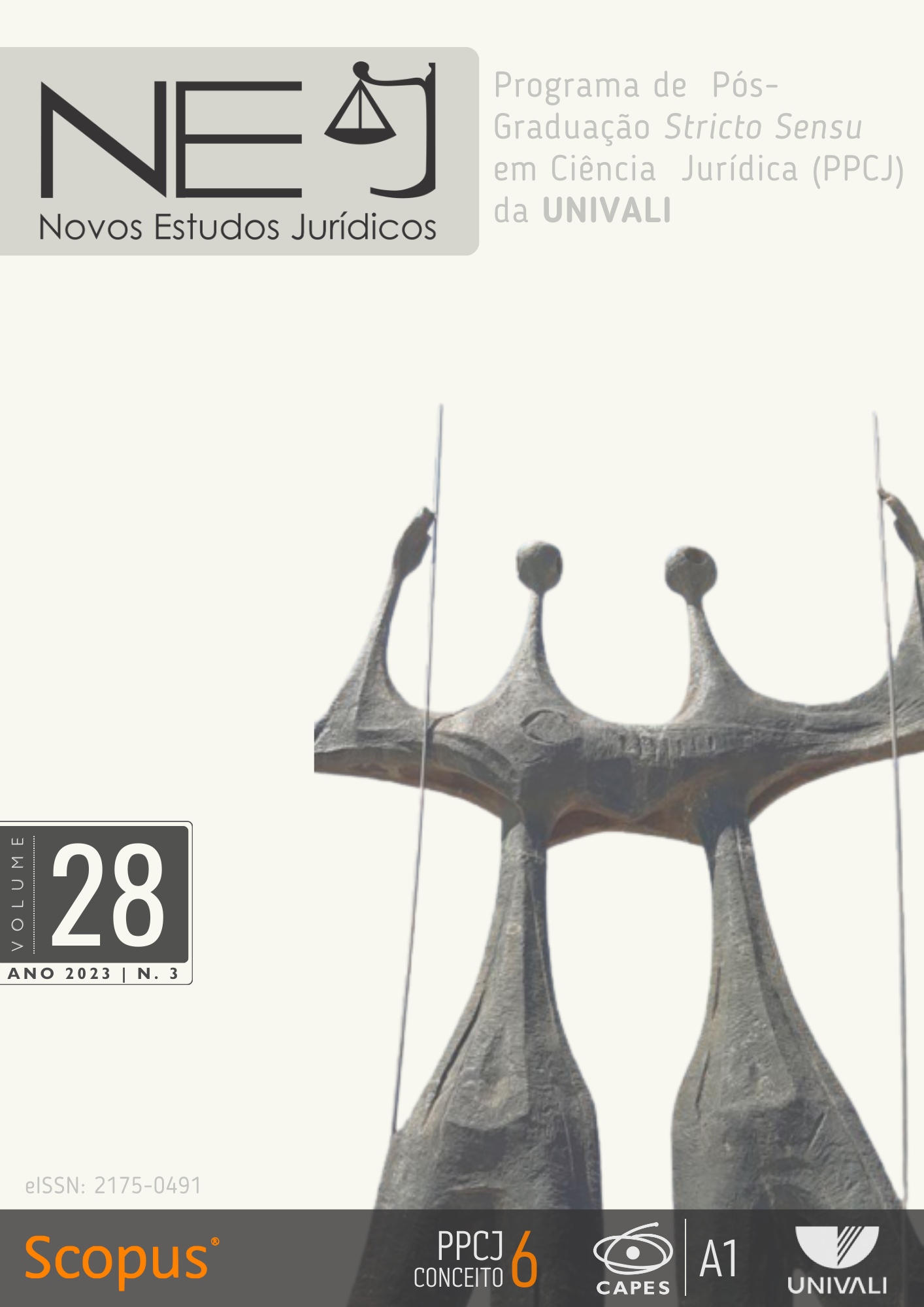CHINA NA ENCRUZILHADA: COMO A CHINA ESTÁ AVANÇANDO NA INOVAÇÃO
DOI:
https://doi.org/10.14210/nej.v28n3.p668-685Palavras-chave:
China, Inovação, Educação públicaResumo
Contextualização: Este artigo analisa o impulso da China em direção à inovação na educação pública, sugerindo que o país está determinado a transformar seu sistema educacional em um que promova a criatividade como norma e faça da inovação um resultado consistente e priorizado. Mudanças nas práticas educacionais só ocorrerão se a ideia for consistente e tiver um valor claro para pais, líderes empresariais e educadores. A liderança chinesa está claramente focada em realizar essa mudança.
Objetivo: O objetivo do artigo é discutir vários elementos-chave que podem facilitar o caminho para a institucionalização da inovação no sistema educacional da China. Isso inclui a possibilidade de a China monetizar a inovação tornando-se líder na batalha global por novas patentes de design, o que justificaria investimentos substanciais na transformação futura de seu sistema educacional, desde a educação infantil até a pós-graduação.
Metodologia: trata-se de pesquisa exploratória que se vale do método indutivo e utilizada a revisão bibliográfica como técnica para coleta de dados.
Resultados: O artigo propõe que, com apoio e orientação adequados, a China está pronta para enfrentar o desafio de nutrir a inovação em um curto espaço de tempo. Isso depende de uma série de decisões sobre como o espaço é utilizado, como os professores são designados, treinados e apoiados, e os conceitos e a pedagogia que direcionam a aprendizagem. Apoiar os professores na construção e gestão de novas estruturas que fomentem a inovação é essencial para mudar a estrutura das escolas e do ensino, ensinando os alunos a se tornarem mais criativos, o que é fundamental para a futura economia da China.
Downloads
Referências
BAIDU COMPANY. Chinese internet learning white paper. The Chinese Journal of ICT in Education, v. 16, n. Suppl, p. 48–49, 2015.
COTTER, K. N.; PRETZ, J. E.; KAUFMAN, J. C. Applicant Extracurricular Involvement Predicts Creativity Better Than Traditional Admissions Factors. Psychology of Aesthetics, Creativity, and the Arts, v. 24, p. 250-267, 2015. DOI: 10.1037/A0039831 DOI: https://doi.org/10.1037/e549472014-001
DACEY, J. S.; LENNON, K. H. Understanding creativity: The interplay of biological, psychological, and social factors. San Francisco: Jossey-Bass, 1998. p. 69.
DELLO-IACOVO, Belinda. Curriculum Reform and "Quality Education" in China: An Overview. International Journal of Educational Development, v. 29, n. 3, p. 241-249, 2009. DOI: https://doi.org/10.1016/j.ijedudev.2008.02.008
GAJDA, A.; BEGHETTO, R. A.; KARWOWSKI, M. Exploring creative learning in the classroom: A multi-method approach. Thinking Skills and Creativity, v. 24, p. 250-267, 2017. Disponível em: https://doi.org/10.1016/j.tsc.2017.04.002 DOI: https://doi.org/10.1016/j.tsc.2017.04.002
HUANG, F. Building the world-class research universities: A case study of China. Higher Education, v. 70, n. 2, p. 203–215, 2015. DOI: https://doi.org/10.1007/s10734-015-9876-8
JIANG, Zhaochen. Literacy teaching by rhyming text. International Conference of Chinese Education, p. 272–280, 2002.
KELLOGG, R. P. China’s brain gain? Attitudes and future plans of overseas. Journal of Chinese Overseas, v. 8, n. 1, p. 83–104, 2012. DOI: https://doi.org/10.1163/179325412X634319
LAI, M.; LO, L. N. K. Struggling to balance various stakeholders’ perceptions: The work life of ideo-political education teachers in China. Higher Education, v. 62, n. 3, p. 333–349, 2011. DOI: https://doi.org/10.1007/s10734-010-9391-x
LI, D.; REMEDIOS, L.; CLARKE, D. Chinese students’ groupwork practices and experiences in China. Higher Education, v. 68, n. 2, p. 227–241, 2014. DOI: https://doi.org/10.1007/s10734-013-9704-y
LOVELESS, T. Lessons from the PISA-Shanghai controversy. Washington, DD: Brookings Institution, Brown Center on Education Policy, 2014.
LUNDVALL, B.A. National Systems of Innovation: Towards a Theory of Innovation and Interactive Learning. London: Pinter Publishers, 1992.
MASHKINA, O. A. China: prospects for innovation and education. História e Modernidade, n. 2, p. 144–158, 2010.
MINISTRY OF EDUCATION OF THE PEOPLE’S REPUBLIC OF CHINA (MOE). Jiaoyubu bangongting guanyu tuijin shishi gaoxiao sixiang zhengzhi lilunke tepin jiaoshou zhidu de tongzhi. 2016. Disponível em: <http://www.moe.edu.cn/srcsite/A13/moe_772/201604/t20160412_237724.html>. Acesso em: 15 mar. 2024.
MOK, K.-H. Globalization and educational restructuring: University merging and changing governance in China. Higher Education, v. 50, n. 1, p. 57-88, 2005. Disponível em: http://www.jstor.org/stable/25068089. R DOI: https://doi.org/10.1007/s10734-004-6347-z
OECD. PISA 2012 results. Creative problem solving: Students’ skills in tackling real-life problems. Paris: OECD, 2014. DOI: https://doi.org/10.1787/9789264208070-en
REN, Y. Q.; LU, B. R. The top-level design of ICT in education during the thirteenth five-year plan. e-Education Research, v. 36, n. 6, p. 5–14, 2015.
SNEDDON, Michael. Visões Internas: Uma olhada no enorme aumento nos depósitos de patentes na China. Intellectual Property Watch, 22 abr. 2015.
STEVENSON, Harold W.; STIGLER, James W. The learning gap: Why our schools are failing and what we can learn from Japanese and Chinese education. New York: Summit Books, 1992
TAUBMAN-REZAKHANLOU, Jahan Harry. hina Continues High Growth in IO Filings, But is There More To The Story. Intellectual Property Watch, 04 fev. 2016.
ZHAO, Yong. Aprendizes de classe mundial: Educando estudantes criativos e empreendedores. Thousand Oaks: Corwin, 2012.
Downloads
Publicado
Como Citar
Edição
Seção
Licença
Na qualidade de autor(es) da colaboração, original e inédita, sobre o qual me(nos) responsabilizo(amos) civil e penalmente pelo seu conteúdo, após ter lido as diretrizes para autores, concordado(amos) plenamente com as Políticas Editorias da Revista Novos Estudos Jurídicos - NEJ e autorizo(amos) a publicação na rede mundial de computadores (Internet), permitindo, também, que sua linguagem possa ser reformulada, caso seja necessário, sem que me(nos) seja devido qualquer pagamento a título de direitos autorais, podendo qualquer interessado acessá-lo e/ou reproduzi-lo mediante download, desde que a reprodução e/ou publicação obedeçam as normas da ABNT e tenham a finalidade exclusiva de uso por quem a consulta a título de divulgação da produção acadêmico científico.





























